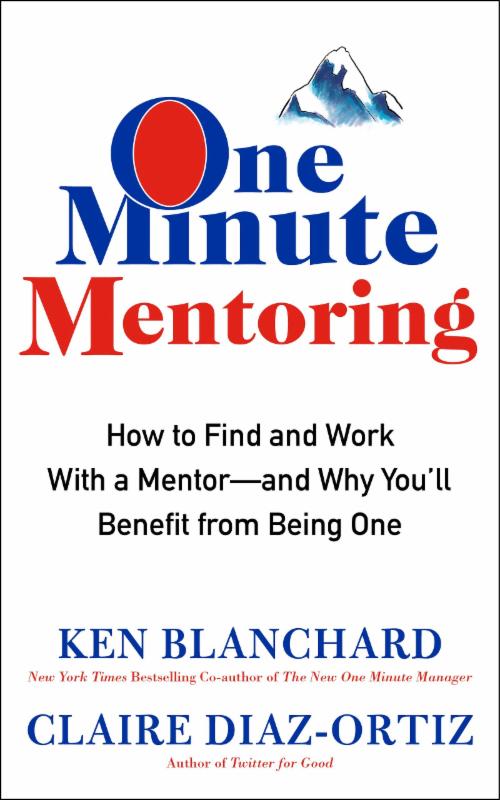Anyone who doesn’t understand the value of one minute hasn’t been paying attention to my good friend Ken Blanchard.
Starting with his “One Minute Manager” and moving through a series of bestsellers, he has shown his millions of fans how just sixty seconds can improve your chances for success.
Good news – he’s at it again, this time with “One Minute Mentoring,” a must-read for folks looking for some help and those who are prepared to offer it.
He’s teamed up with Claire Diaz-Ortiz, a former Twitter executive and author of “Twitter for Good.”
Their combined knowledge of intergenerational mentoring is presented in this fictional parable about the power of finding or being a mentor.
But shouldn’t mentoring be a longer process than just one minute? Ken and Claire would agree with that, but say that “the best advice we ever gave or received was given in less than a minute. In other words, the guidance that really made a difference did not come in the form of long, complex theories – it came in short, meaningful insights.”
As one who has been on both sides of the conversation, I couldn’t agree more. I am fortunate to have learned from a variety of mentors: my father Jack Mackay, my father-in-law Rudy Miller, my University of Minnesota golf coach Les Bolstad, my college adviser Harold Deutsch, businessman Curt Carlson, and many others.
I owe much of my success to their guidance.
Understanding that I had a responsibility to give back, I have also mentored over one hundred young – and not so young – entrepreneurs. I usually learned as much from the experience as my mentees did. And it was worth every minute.
How did we find each other? Sometimes through mutual friends, work events, even sitting next to one another on a plane. As the authors say, “When the student is ready, a teacher appears. Mentors are all around you once you start looking for them.”
And it works both ways, they say. They encourage people to become mentors because “you won’t fully discover, appreciate or leverage what you have until you start giving it away.”
Compatibility is important, and they describe two aspects of working with someone – essence and form. “Essence is all about sharing heart-to-heart and finding common values. “Form is about structure – how you might work together.”
Ken and Claire say that one of the biggest barriers people worry about is time: “It’s true that a mentoring relationship will take a little time, but a few hours a month is not going to do people in, especially when they realize how energizing and inspiring those few hours will be.”
They also acknowledge a couple other things that get in the way of mentoring – fear and uncertainty. A lot of people are afraid to approach potential mentors, they say, and potential mentors may be afraid that they don’t really know how to mentor.
Added to that, uncertainty about what mentoring really is and how the relationship works scares people away. I’ve found that there isn’t a specific set of guidelines. Every mentor/mentee relationship needs to be tailored to the situation.
Ken and Claire created the MENTOR model to help people build successful relationships:
“By creating a Mission, you’ll put the relationship on solid footing.
“By deciding how to Engage, you’ll have clarity about how to work together.
“By Networking, you’ll expand your horizons.
“By building Trust, you’ll deepen the bond.
“By creating Opportunities, each of you will grow.
“And by Reviewing and renewing your partnership, you’ll know if and when your season of mentorship has ended.”
Exactly what is a “season of mentorship?” From my own experience, I can tell you that I have mentored some people for a few weeks and others for years. As their needs have changed, I have sometimes directed people to other mentors who might have different insights. I know my limitations!
Similarly, I have relied on my mentors, sometimes with months or years between those contacts. But I made a point of staying in touch so that they would realize how much I valued their help. I made sure they knew about my successes and appreciated their contributions toward my goals.
“Mentoring will take some time and intention,” Ken and Claire say. “It also takes time and intention to learn to drive – but once you know how, you can really go places!”
Mackay‘s Moral: One minute truly can change your life.

